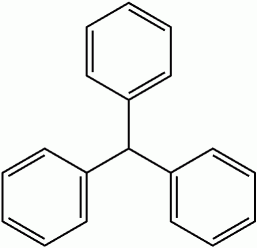Acid dye
Acid dye is a member of a class of dye that is applied from an acidic solution. In the home or art studio, the acid used in the dyebath is often vinegar (acetic acid) or citric acid. The uptake rate of the dye is controlled with the use of sodium chloride.
In textiles, acid dyes are effective on protein fibers, i.e. animal hair fibers like wool, alpaca and mohair. They are also effective on silk. They are effective in dyeing the synthetic fiber nylon but of minimal interest in dyeing any other synthetic fibers.
Acid dyes are generally divided into three classes which depend on fastness requirements, level dyeing properties and economy. The classes overlap and generally depend on type of fiber to be colored and also the process used.
Acid dyes are thought to fix to fibers by hydrogen bonding, Van der Waals forces and ionic bonding. They are normally sold as the Sodium salt therefore they are in solution anionic. Animal protein fibers and synthetic Nylon fibers contain many cationic sites therefore there is an attraction of anionic dye molecule to a cationic site on the fiber. The strength (fastness) of this bond is related to the desire/ chemistry of the dye to remain dissolved in water over fixation to the fiber.
Structures
The chemistry of acid dyes is quite complex. Dyes are normally very large aromatic molecules consisting of many linked rings. Acid dyes usually have a sulfonyl or amino group on the molecule making them soluble in water. Water is the medium in which dyeing takes place. Most acid dyes are related in basic structure to the following:
Anthraquinone type:
Many acid dyes are synthesised from chemical intermediates which form anthraquinone-like structures as their final state. Many blue dyes have this structure as their basic shape. The structure predominates in the levelling class of acid dye.
Azo dyes:
The structure of azo dyes is based on azobenzene (Ph-N=N-Ph). Although Azo dyes are a separate class of dyesuff mainly used in the dyeing of cotton (cellulose) fibers, many acid dyes have a similar structure, most are red in color.
Triphenylmethane related:
Acid dyes having structures related to triphenylmethane predominate in the milling class of dye. There are many yellow and green dyes commercially applied to fibers that are related to triphenylmethane.
Classes of acid dyes
Equalizing/leveling acid dyes: Highest level dyeing properties. Quite combinable in trichromatic shades. Relatively small molecule therefore high migration before fixation. Low wet fastness therefore normally not suited for apparel fabric.
Milling acid dyes: Medium to high wet fastness. Some milling dyes have poor light fastness in pale shades. Generally not combinable. Used as self shades only.
Metal complex acid dyes: More recent chemistry combined transition metals with dye precursors to produce metal complex acid dyes with the highest light fastness and wet fastness. These dyes are also very economical. They produce, however, duller shades.
Health and safety
Any dyes including acid dyes have the ability to induce sensitization in humans due to their complex molecular structure and the way in which they are metabolized in the body. This is extremely rare nowadays, as we have a much greater understanding through experience and knowledge of dyestuffs themselves. Some acid dyes are used to color food. We wear fabrics every day exposing our skin to dyes.
The greatest risk of disease or injury due to dyes is by ingestion or exposure to dye dust. These scenarios are normally confined to textile workers. Whereby the dye itself is normally non toxic, the molecules are metabolized (usually in the liver) where they may be broken back down to the original intermediates used in manufacture. Thus many intermediate chemicals used in dye manufacture have been identified as toxic and their use restricted. There is a growing trend among governments to ban the importation of dyes synthesized from restricted intermediates. For example: the dye CI Acid red 128 is banned in Europe as it was found to metabolize in the body back to ortho-toluidine, one of its chemical intermediates. Many intermediates used in dye manufacture, such as o-toluidine and benzidine, were found to be carcinogenic. All the major chemical companies have now ceased to market these dyes. Some, however, are still produced but they are found to be totally safe when on the fiber in its final state. The use of these dyes is declining rapidly, as cheaper and safer alternatives are now easily available.
The incident concerning the dye Sudan 1 is an example of a suspected toxic dye finding its way into the food chain. Such incidents are extremely rare.
| |||||||||||||||||||
See also
ReferencesISBN links support NWE through referral fees
<<Need 3 refs>>
Credits
New World Encyclopedia writers and editors rewrote and completed the Wikipedia article in accordance with New World Encyclopedia standards. This article abides by terms of the Creative Commons CC-by-sa 3.0 License (CC-by-sa), which may be used and disseminated with proper attribution. Credit is due under the terms of this license that can reference both the New World Encyclopedia contributors and the selfless volunteer contributors of the Wikimedia Foundation. To cite this article click here for a list of acceptable citing formats.The history of earlier contributions by wikipedians is accessible to researchers here:
The history of this article since it was imported to New World Encyclopedia:
Note: Some restrictions may apply to use of individual images which are separately licensed.


